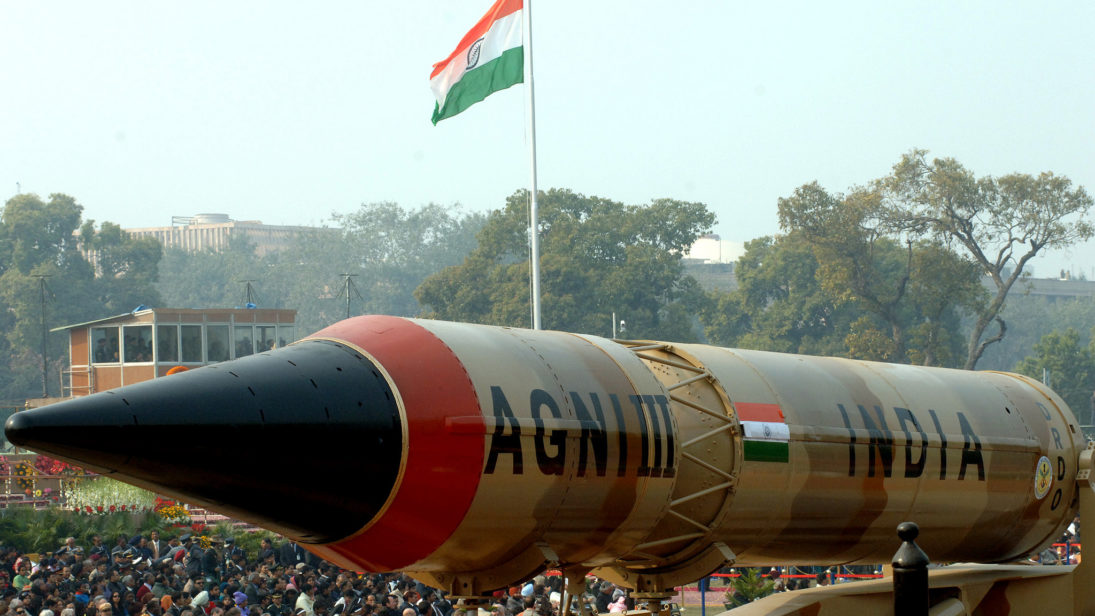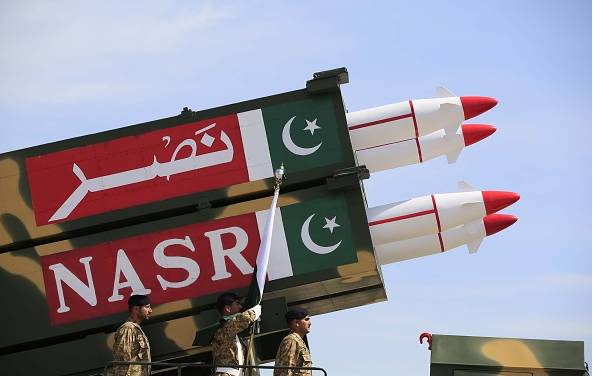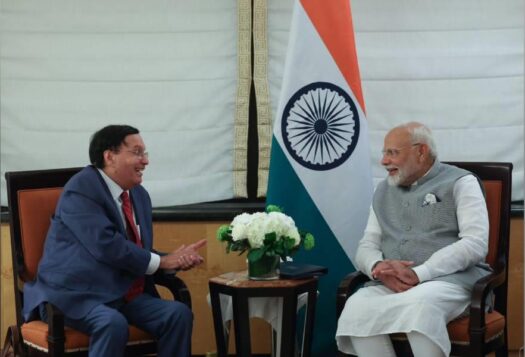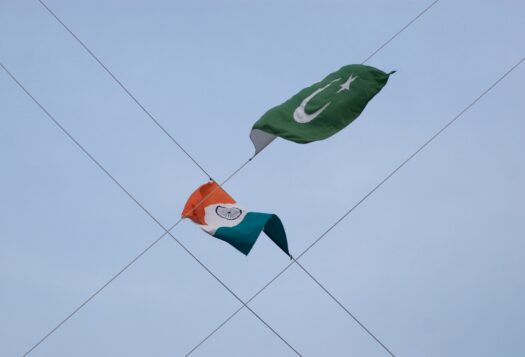
The debate on the nuclear threat that India poses to deter Pakistan’s first use of tactical nuclear weapons (TNWs) is ongoing. Traditionalists in New Delhi have hinted that the threat is of massive countervalue retaliation – the use of strategic nuclear weapons against an adversary’s cities and industrial hubs. However, a few retired Indian government and military officials have recently presented a flexible reading of that threat, which includes proportionate counterforce retaliation – meaning the use of nuclear weapons of yields proportionate to Pakistan’s TNWs on military assets in Pakistan. In light of this debate, this piece argues that both massive and proportionate retaliation demand contemplation of the prospect of escalation control and the probability of escalation dominance, both of which New Delhi has avoided to date. However, these concepts remain central to making India’s nuclear retaliatory threat a credible deterrent to Pakistan’s first use of TNWs.
India’s nuclear retaliatory threat, as captured in its declaratory doctrine of 2003, has traditionally been read by various Indian experts as massive countervalue retaliation. However, critics have heavily questioned the credibility of the threat of massive retaliation as a deterrent to Pakistan’s first-use of TNWs in a battlefield. The criticism has been that on the ground, the threat is highly disproportionate; that Pakistan, in response, could retaliate massively as well with its second-strike capabilities, and as a consequence, the probability of India using its strategic nuclear weapons in retaliation to use of TNWs is low. In recent years, India has attempted to develop ballistic missile defense (BMD) systems, but they are yet to be commissioned into service, and it is unlikely that New Delhi would risk inviting a second strike from Pakistan on its cities counting on the efficacy of BMDs.
In response to the criticism of the doctrine in posing the threat of massive retaliation, retired senior Indian officials like former National Security Advisor, Shivshankar Menon and former Commander-in-Chief of India’s Strategic Forces Command Lt. Gen. (retd) B. S. Nagal, have recently noted that the doctrine does not restrict India from retaliating proportionately or from choosing a mixture of civilian and military targets in Pakistan.
Indeed, as has been argued, India already has the capabilities and procedures for proportionate nuclear retaliation since that threat remains purely retaliatory and is congruent with India’s existing operational doctrine of assured retaliation. For instance, it has fission devices of sub-kiloton yield, tested in May 1998, that parallel the yields of Pakistan’s TNWs. Meanwhile, on delivery capabilities, since India is not necessarily required to retaliate in the same battlefield where Pakistan first uses a TNW, it could use its medium-range ballistic missiles from the Agni-series as well as cruise missiles from the BrahMos series as delivery vehicles. Concurring with the argument that proportionate retaliation does not require any changes in the command and control, Indian scholar Rajesh Rajagopalan argues that India could instead use its air bombers to deliver much smaller-sized warheads, avoiding the “unpalatable” consequences of TNWs.

In essence, proportionate retaliation does not require the development and deployment of TNWs with pre-delegation of their launch authority to local commanders – pre-delegation is a requirement of an asymmetric escalation posture, which Pakistan has adopted to deter a low-intensity conventional attack.
Yet, traditionalists in New Delhi continue to oppose the consideration of proportionate retaliation as India’s nuclear threat to Pakistan, arguing that it would promote nuclear warfighting in South Asia. They argue that Pakistan may accept the cost of a proportionate retaliation by India because of prospective gains such as halting India’s conventional offensive. Pakistan’s decision to accept the cost of an Indian proportionate retaliation would have to be based on speculation that the conflict would not escalate beyond a proportionate nuclear exchange at a tactical level. Thus, traditionalists have categorically dismissed proportionate retaliation because it may lead to the consideration of escalation control, encouraging Pakistan to initiate nuclear conflict. Former Foreign Secretary Shyam Saran, for instance, has noted that “Any nuclear exchange, once initiated, would swiftly and inexorably escalate to the strategic level. Pakistan would be prudent not to assume otherwise as it sometimes appears to do, most recently by developing and perhaps deploying theatre nuclear weapons.”
Indian traditionalists, however, fail to note that even massive retaliation would require the contemplation of escalation control, since Pakistan would reply in kind to India’s massive retaliation with its own strategic nuclear weapons. This is perhaps why Menon makes the contentious argument that:
“If Pakistan were to use tactical nuclear weapons against India, even against Indian forces in Pakistan, it would effectively be opening the door to a massive Indian first strike, having crossed India’s declared red lines. There would be little incentive, once Pakistan had taken hostilities to the nuclear level, for India to limit its response, since that would only invite further escalation by Pakistan. India would hardly risk giving Pakistan the chance to carry out a massive nuclear strike after the Indian response to Pakistan using tactical nuclear weapons.”
If indeed escalation control is improbable once a nuclear weapon has been used, then, as Menon argues, nothing short of a comprehensive nuclear strike, which eliminates all of Pakistan’s nuclear assets, would suffice India’s security needs. That is neither proportionate retaliation nor massive retaliation. And while India’s ability to completely eliminate Pakistan’s nuclear assets is likely to remain questionable, India may still be better off with a lesser number of Pakistani nuclear assets remaining intact and functional.
But all of this deliberation is premised on the assumption that escalation of a nuclear conflict cannot be controlled. It’s true that there are serious challenges to India’s and Pakistan’s ability to control escalation of a conflict once nuclear weapons have been used. Nonetheless, as Stephen Cimbala of Pennsylvania State University notes, “States still have the responsibility for world order, and peacemaking does not stop after [nuclear] war has begun.” Cimbala further adds, “Deterrence can be applied to the problem of limiting a war as well as preventing it.”
Critics of proportionate retaliation could argue that contemplation of escalation control would encourage nuclear warfighting between India and Pakistan. However, as I have argued elsewhere, massive countervalue retaliation or the threat of it cannot be proclaimed as war-terminating either – it is rather “one that escalates war to the worst levels” once executed.
An important factor that would determine the prospect of escalation control, and consequently the credibility of India’s nuclear retaliatory threat, is the probability of New Delhi dominating escalation. That is, whether India can use its retaliatory threat to influence Pakistan’s calculus in such a way that stops Pakistan from escalating the conflict beyond India’s nuclear retaliation and simultaneously discourages Pakistan from using nuclear weapons in the first place. Policymakers in New Delhi need to assess whether India can dominate escalation in posing the threat of massive retaliation or proportionate retaliation, and thus determine which of the two is more credible of a deterrent.
***
Click here to read this article in Urdu.
Image 1: Public.Resource.Org via Flickr
Image 2: Andolu Agency via Getty


